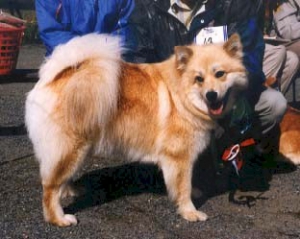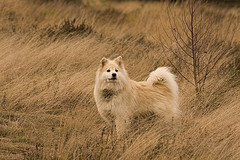Finnish Lapphund Colour
Finnish lapphunds come in a myriad of colours and what should be emphasised is no one colour is better or more special/rare than another.
The breed standard asks that there is a main colour or pattern – so three patterns are considered undesirable:
- parti colour where there are large splashes of white breaking up the main colour
- brindle where the main colour is broken by faint stripes
- saddle – where there is a black saddle overlaying the main colour
Information on the genetics of colour inheritance
More examples of colours and explanation on colour genetics in the finnish lapphund
Black & Tan
The most widely seen colour in the breed – but with varying amounts of tan, and intensity of tan
Photos of same dog as a puppy and an adult
Photos of same bitch as a puppy and an adult
Tricolor and B&W with the Irish Spotting pattern
Wolf Sable
Dominant to Black & Tan and therefore it requires at least one parent to be Wolf Sable to be seen in a litter
Solid Black (or Black & White)
A recessive colour in our breed, so can be born to non solid black parents. Sometimes they are really B&T but tan points are small or hidden by white pattern, giving the striking B&W dogs.
Brown & Tan
Both parents must carry at least one brown gene for a litter to include brown pups, recessive to black
Red Sable
Amount of black tipping in hair can vary to overlay on shoulders and back to just a few hairs – giving appearance of red coat only.

Cream/Cream Sable
The black pigment is affected by two copies of an e series gene converting the black pigment to yellow (as with yellow labs), this means cream puppies can appear to black/B&T parents

Spectacles
Unusual feature to our breed, where hair colour around eye rims is paler giving appearance of spectacles, more noticeable in darker wolf sable or solid black dogs.

Blue/Blue & Tan
Recessive colour caused by the effect of two copies of dilution gene on the black colouring giving a blue effect where black would have been expected. (Not seen in UK as yet)




















